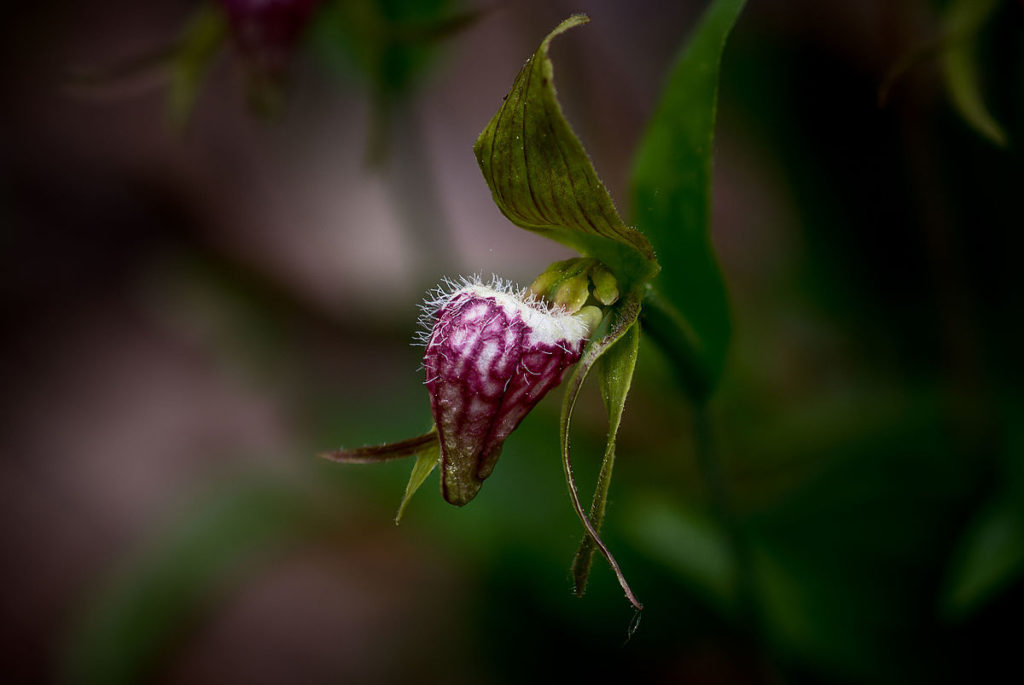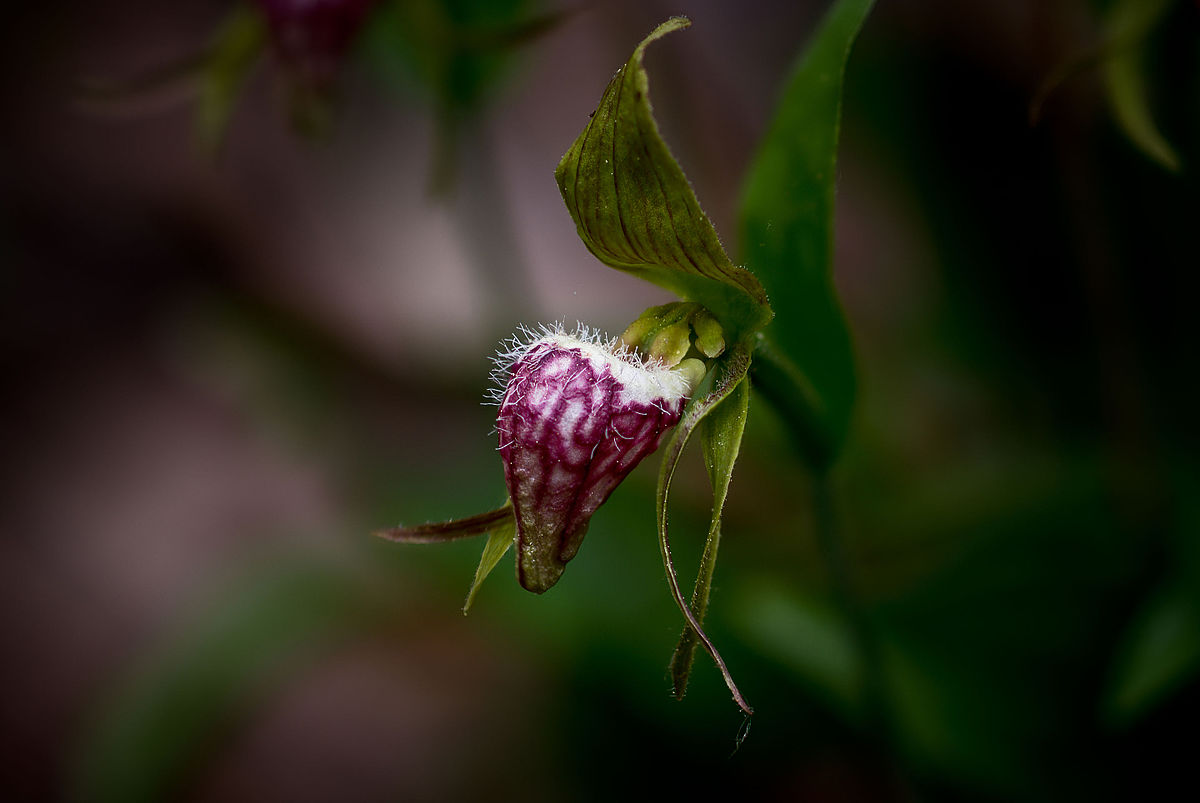Last fall, the province released the 11 years-overdue Recovery Plan for the Ram’s Head Lady Slipper in Nova Scotia. Here’s a summary of the report and what you need to know about this Species At Risk going forward.
by NatureNS Executive Director, Becky Parker
A Rare Orchid vs the Nova Scotia Government
The Ram’s Head Lady Slipper is a small orchid that grows in calcareous and moderately open forests, such as the mature deciduous or mixed woods of Nova Scotia’s gypsum hotspots. Rare across much of its range in Eastern North America, Nova Scotia’s population is limited to just 3144 stems in only a few locations in the Annapolis Valley and North Shore. All are threatened by a combination of gypsum mining, forestry operations, and housing and other development in forest habitats.
The RHLS is also one of the 6 species featured in the Bancroft vs NS Lands and Forestry lawsuit you helped us prepare for last year.
In that judicial review, we alleged that the province failed to establish a Recovery Team and create a Recovery Plan within the legal deadline (which is within one year of listing for Endangered species like RHLS according to the NS Endangered Species Act, or 2008 in this case.)
“We’re working on it…”
In response to this accusation, the legal team for the province asserted that any failure to produce a Recovery Plan for RHLS was moot, because the Department was currently working on the document, and requested that our claim be struck down. The Minister did appoint a “Plants Recovery Team” in May 2019 (shortly after our judicial review was filed…) whose mandate now includes several species including the RHLS, but this appointment was 11 years late according to the province’s own Endangered Species Act. By the time we went to court in May 2020, the Recovery Plan for RHLS was still pending. Judge Brothers agreed that this delay was unacceptable, saying,
“To find otherwise would implicitly suggest that a decision-maker can cure a serious failure to observe statutory duties by taking action after a [lawsuit] is filed, essentially placing the onus on the interested parties to take legal action before the Minister is required to comply with his or her duties.”
We won the case and in the fall of 2020, government finally released the RHLS Recovery Plan.
Core Habitat and Action Items for Conserving the RHLS
This new Recovery Plan calls for a number of actions in order to effectively conserve the species, including efforts to protect identified core habitat, mitigate known threats, increase awareness of the species among landowners and mining representatives, and to conduct additional research to address knowledge gaps in the plants’ population trends and general biology.
Specifically, it outlines both cautious short-term and long-term goals for population recovery: maintaining current stem count numbers at all known locations over the next 5 years and achieving 5000 stems within 20 years, respectively. “Core habitat” is a required component of SAR recovery under the Nova Scotia Endangered Species Act and includes “specific areas of habitat essential for the long-term survival and recovery of endangered or threatened species.” The identification of core habitat in a Recovery Plan does not, itself, result in any additional protections within the designated core habitat; it is up to the Minister to make regulations around these areas based on recommendations within the Plan. In the case of the RHLS, the scientists who wrote the Recovery Plan identified core habitat as “all known occurrences along with a 1,500m buffer of forested lands.” This buffer is intended to allow for unknown or yet undiscovered occurrences, which are likely to exist near known stems, and was based on a recent discovery of a new patch in the Windsor area. The Plan also recommends that this core habitat definition be updated regularly, to account for new scientific understanding of RHLS ecology or habitat associations.
What Comes Next?
Most of the land where RHLS is currently found is privately owned, half by residents or woodlot owners and the other half by gypsum mining companies. A small percentage, about 130ha, is publicly owned and managed by either the Department of Lands and Forestry or the Municipality of the District of West Hants (the latter includes a public park where one RHLS occurrence is already known).
You can help steward existing RHLS sites by calling or writing your local municipal councilor (in West Hants), the Minister of Lands and Forestry, or the Premier to ask them what they are doing to ensure no loss in plant numbers over the next 5 years. You can encourage the Minister to implement regulations that would apply to provincially-owned core habitat (including no clear-cutting, no new mining leases, etc). You can talk about the RHLS and other SAR with your forester, woodlot manager, or friends who own woodlots. You can practice low-impact selective harvest methods on your woodlot, which may help to foster better habitat for lady slippers. Finally, you can help monitor existing or future RHLS populations by joining your local natural history society, reporting sightings to the province or iNaturalist, and reporting poaching to the province. Explore the areas near you where gypsum or limestone are common. If you are already watching a patch on your woodlot or in your “naturehood”, you might consider practicing your bee ID skills and reporting the pollinators that visit your plants. Which pollinator species are important for RHLS, their ecology, or their abundance in areas where RHLS grows are not well understood, and your data could help to address these knowledge gaps.
It is unfortunate that we, as hobby naturalists and retired scientists, must hound our own government to ensure proper adherence to environmental legislation, but we have learned how important it is for citizens to speak up. Read our updates on the other species featured in the judicial review, the Mainland Moose and Wood Turtle, and stay tuned for more about the Canada Warbler, Eastern Wood Pewee, and Black Ash.
In the meantime, tune into our March “Nature Talk” when our President Bob Bancroft will give us an overview of the Natural History of the Mainland Moose in Nova Scotia. Read our response to the draft Silvicultural Guidelines for the Ecological Matrix. And make sure you’re following us on social media for more ways you can get involved in our SAR initiatives.
Questions?
Reach out to our staff or board at:
info@naturens.ca
www.naturens.ca

